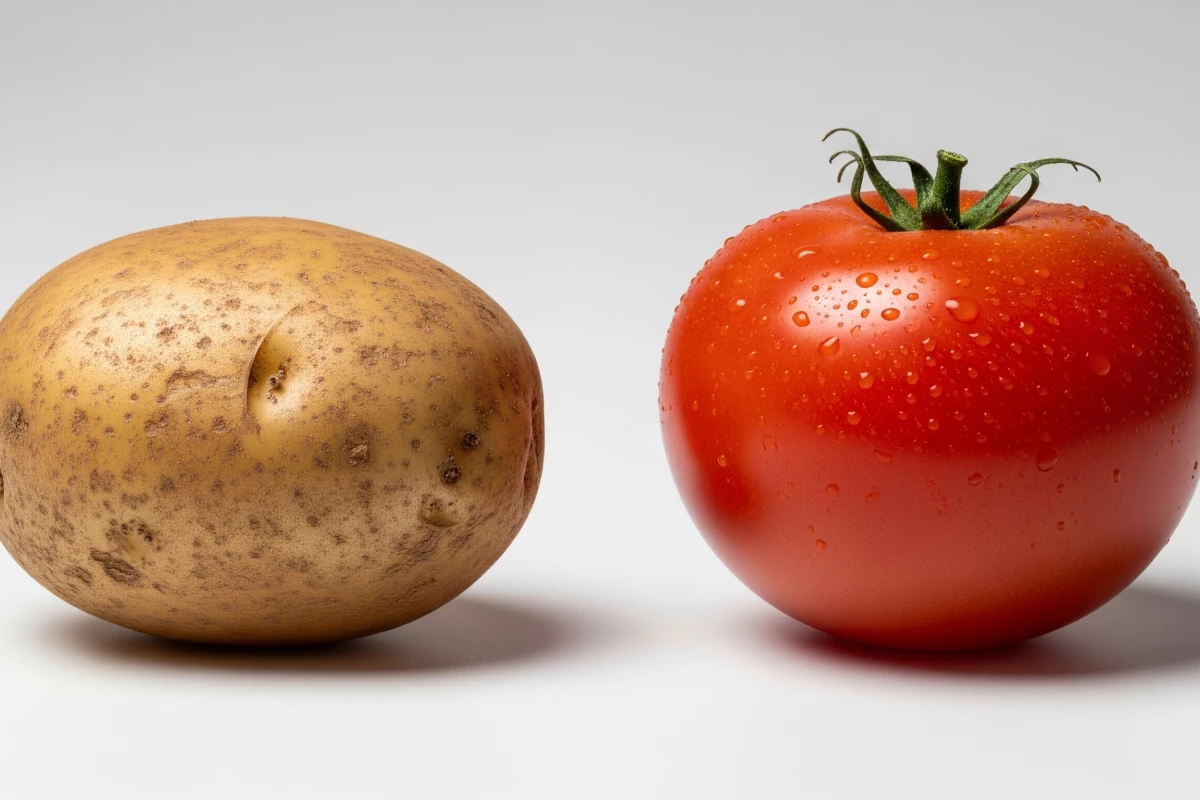Tracing the potato’s deep ancestry, researchers have revealed a surprising origin story: modern potatoes emerged from natural interbreeding between tomato relatives and a wild-potato-like species about nine million years ago.
The study, published in Cell, suggests that this ancient hybridization triggered an innovative trait, which, along with recombined genetic variations, sparked species diversification and enabled potatoes to spread across diverse environments in the Andes. The innovative trait in focus is the formation of underground tubers. Tubers are enlarged underground structures, found in plants like potatoes and yams, which store nutrients such as water and carbohydrates.
Today, the humble spud is the world’s third most important staple crop, providing critical calorie intake for billions of people. However, scientists have long been perplexed by the origin of potatoes. Potato plants are nearly identical to three Chilean potato-like species called etuberosum, yet only potatoes bear tubers.
Similarly, genetic analysis shows that potato plants are more closely related to tomatoes, which also don’t carry tubers. So, the big question was how did a species so morphologically and genetically similar to tuberless plants end up with tubers?

To solve this botanical contradiction, the team analyzed a comprehensive genomic dataset of over 450 cultivated potatoes and 56 wild potato species, sampled from across South America. They found that every potato species exhibits a stable, balanced mix of DNA from both sides of the parental lineage, indicating the hybrid origin. By using demographic modeling, researchers discovered tomatoes and etuberosum had a common ancestor around 14 million years ago, and the hybridization event occurred around nine million years ago.
Digging deeper into the genomes, researchers pinpointed two genes crucial for tuber innovation. The SP6A gene, from the tomato side of the family, acts as a key regulator of tuber formation. Meanwhile, IT1, an essential gene controlling the growth of underground stems, came from the etuberosum side.
Functional assays revealed that the combination of these two genetic pieces played a vital role in tuberization, and the loss of either one renders the offspring incapable of vegetative reproduction.
Additionally, this evolutionary innovative trait coincided with the rapid uplift of the Andes mountains. The uplift of the Andes led to colder environmental conditions, potentially leading to harsher environments that made pollination and seed production more difficult.
Fortunately, the initial hybrid generated tubers as a new organ. With a secure nutrient reserve underground, this “innovative tuber organ” likely facilitated its early survival in harsh climates, including those offspring with low fertility.
“Tubers could store nutrients for cold adaptation, and enable asexual reproduction to hedge the risk of reduced fertility. These allowed the initial hybrid to survive and rapidly expand,” co-first author Yiyuan Ding told New Atlas in an email.
The ability to reproduce asexually without seeds or pollination (i.e., vegetative reproduction through tubers) enabled the plants to stabilize beneficial hybrid gene combinations and establish themselves in diverse environments. This efficient reproductivity also triggered subsequent rapid species diversification of potatoes, which now comprises 107 species found in a wide range of environments.
The study isn’t complete yet, and the researchers acknowledge the need for further evidence to elucidate how the potato ancestor regained the ability for normal sexual reproduction (i.e., through seeds, which involves pollination and the fusion of gametes).
“Since the hybridization event happened eight to nine million years ago, and the extant petota, tomato, and etuberosum lineages diverged substantially from their ancestral states, it remains challenging to solve these questions,” Yiyuan Ding said to New Atlas. “Our primary focus is on translational applications in potato breeding, particularly addressing deleterious mutations – a major genetic constraint in conventional potato breeding. By using tomato as a novel chassis, we can circumvent this limitation.”
The study has been published in the journal Cell.






